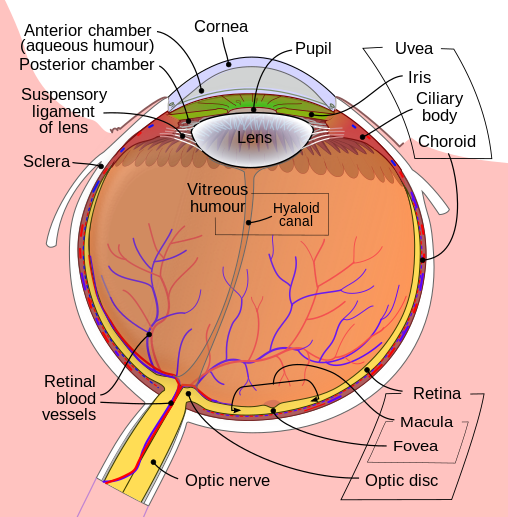PamsWarren
Well-Known Member
Hi all.
I have two questions - one about glaucoma and a semi-related question about teeth.
My 12yo rabbit, Fuzz (neutered male/angora mix), has been diagnosed with glaucoma. At one time, the pressure in his eye was about 45. We have been able to get it down to the mid 30's, but no further. He is currently on timolol eye drops, ketoralac eye drops and metacam. He also has a cataract on that eye and the eye appears to be completely non-functioning. I only have a very basic understanding of glaucoma; can someone help me understand how glaucoma meds work and why one glaucoma med may work better in controlling the pressure than another? I mean, it's not like we are dealing with bacteria where resistance is a factor, so how and why do the various glaucoma meds differ? I know there are options other than timolol; perhaps another may be a better choice. Something I'd like to discuss with my vet, but I would like to be better informed before I ask. Hope my question makes sense.
Fuzz also has molar issues. Up until January, he was having his molars done about every 4-6 weeks. Now the vet just files the sharp edges off of his molars approx every 4 weeks; the last molar grind was VERY hard on Fuzz so we are very hesitant to put him under again. Fuzz's appetite is mediocre, so I am supplementing his meals with syringe food (he readily eats about 120-150 cc of food per day and his weight is up to almost 2kg again, which is a good thing).
I've noticed that when I syringe feed him, he closes his bad eye. Syringe feeding also makes that eye tear, which makes me suspicious that there still may be a spur in there somewhere. I've had his teeth checked by two different rabbit savvy vets (no anesthetic), but they didn't find anything. I know that it's not the same as having an exam under anesthetic, but I like I said, I'm really am scared to put him under again. Could the pain from the glaucoma be causing the tearing? Why does he close his bad eye when he eats? BTW, the eye discharge is clear, although today it did appear a tiny bit milky. He had his duct flushed last week (it was patent). I have to follow up with the vet again this week, so I will keep an eye on the colour of the discharge and discuss with him.
Other than his mediocre appetite, he seems to be doing ok. Still hops around with ease, comes out of his room at night to visit with us and humps Muffy. Alot.
Would appreciate any thoughts on the eye or teeth.
With thanks.
Pam & Fuzz
I have two questions - one about glaucoma and a semi-related question about teeth.
My 12yo rabbit, Fuzz (neutered male/angora mix), has been diagnosed with glaucoma. At one time, the pressure in his eye was about 45. We have been able to get it down to the mid 30's, but no further. He is currently on timolol eye drops, ketoralac eye drops and metacam. He also has a cataract on that eye and the eye appears to be completely non-functioning. I only have a very basic understanding of glaucoma; can someone help me understand how glaucoma meds work and why one glaucoma med may work better in controlling the pressure than another? I mean, it's not like we are dealing with bacteria where resistance is a factor, so how and why do the various glaucoma meds differ? I know there are options other than timolol; perhaps another may be a better choice. Something I'd like to discuss with my vet, but I would like to be better informed before I ask. Hope my question makes sense.
Fuzz also has molar issues. Up until January, he was having his molars done about every 4-6 weeks. Now the vet just files the sharp edges off of his molars approx every 4 weeks; the last molar grind was VERY hard on Fuzz so we are very hesitant to put him under again. Fuzz's appetite is mediocre, so I am supplementing his meals with syringe food (he readily eats about 120-150 cc of food per day and his weight is up to almost 2kg again, which is a good thing).
I've noticed that when I syringe feed him, he closes his bad eye. Syringe feeding also makes that eye tear, which makes me suspicious that there still may be a spur in there somewhere. I've had his teeth checked by two different rabbit savvy vets (no anesthetic), but they didn't find anything. I know that it's not the same as having an exam under anesthetic, but I like I said, I'm really am scared to put him under again. Could the pain from the glaucoma be causing the tearing? Why does he close his bad eye when he eats? BTW, the eye discharge is clear, although today it did appear a tiny bit milky. He had his duct flushed last week (it was patent). I have to follow up with the vet again this week, so I will keep an eye on the colour of the discharge and discuss with him.
Other than his mediocre appetite, he seems to be doing ok. Still hops around with ease, comes out of his room at night to visit with us and humps Muffy. Alot.
Would appreciate any thoughts on the eye or teeth.
With thanks.
Pam & Fuzz






